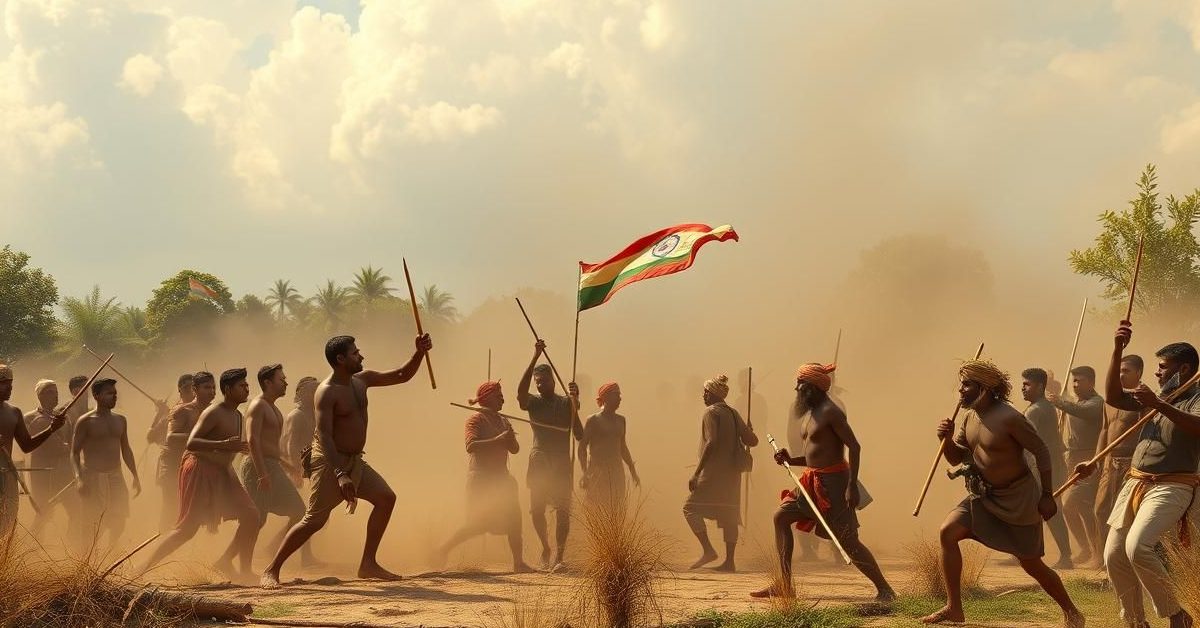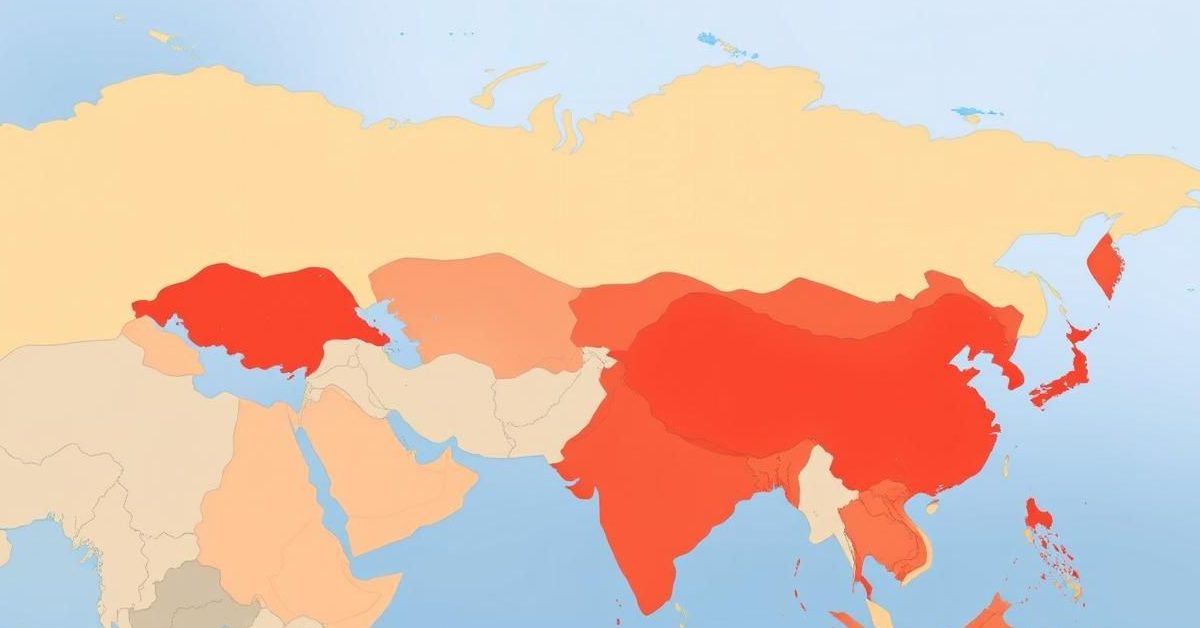As the echoes of history resonate, we mark 170 years since a pivotal moment of defiance that forever etched itself into the annals of India’s struggle for self-determination: the Santhal Hul. More than just a rebellion, it was a searing testament to courage, unity, and an unwavering spirit against the oppressive might of colonial rule. Each year, June 30th is observed as ‘Hul Diwas’ in Jharkhand, a powerful reminder of this seminal uprising that paved the way for future movements against exploitation.
For far too long, the narrative of India’s fight for freedom has focused primarily on the mainstream movements, sometimes overlooking the fierce resistance offered by indigenous communities. Yet, it is within these powerful tribal insurrections, like the Santhal Hul, that we truly grasp the widespread nature of colonial oppression and the diverse forms of resistance it provoked. Understanding these stories is not merely academic; it is crucial for appreciating the rich tapestry of our nation’s past.
The Roar of ‘Hul’: Unpacking the Santhal Rebellion
The Santhal Rebellion, or ‘Hul’ – a word signifying ‘revolution’ in the local dialect – erupted with ferocity in 1855. This was a full two years before the more widely recognized Sepoy Mutiny of 1857, often labeled “the first war for Indian independence,” underscoring the Santhals’ pioneering role in organized anti-colonial resistance.
This was no mere localized disturbance. It was a meticulously orchestrated war against the myriad forms of oppression endured by the Santhals. Their adversaries were not only the mighty British East India Company but also their insidious collaborators: the rapacious zamindars (landlords) and the cunning, exploitative moneylenders who formed an unholy alliance to dispossess and enslave the tribal populace.
At the heart of this formidable uprising were two charismatic brothers, Sidhu and Kanhu. Their leadership galvanized not only the Santhals but also drew support from an astonishing 32 other castes and communities, rallying together under the banner of collective resistance against a common oppressor. This broad solidarity speaks volumes about the pervasive nature of the exploitation.
Seeds of Discontent: The Damin-i-Koh and Broken Promises
The groundwork for the Santhal Hul was laid decades earlier, specifically in 1832. In an administrative maneuver, the East India Company established the Damin-i-Koh region within the verdant forested expanse of the Rajmahal Hills. This area was designated for the settlement of Santhal communities who had been displaced from their ancestral lands in various parts of the Bengal Presidency, including Birbhum, Murshidabad, Bhagalpur, Barabhum, Manbhum, Palamau, and Chhotanagpur.
The promise was alluring: new lands for settlement and agricultural pursuits. However, what followed was a grim betrayal. The Santhals soon found themselves ensnared in a vicious cycle of land-grabbing and the brutal practice of ‘begari’ or bonded labor. This bonded labor manifested in two particularly cruel forms: ‘kamioti’ and ‘harwahi’, binding individuals and families to indefinite servitude for paltry sums or often, for no wages at all. Over the years, the Santhals bore the brunt of these and other exploitative practices, systematically aided and abetted by the British legal and administrative machinery.
The clash between the aggrieved Santhals and the colonial forces raged fiercely throughout 1855. Despite their valiant efforts and intimate knowledge of the terrain, the rebellion was ultimately crushed in 1856. The British, with their superior modern firearms and strategic deployment of war elephants, overwhelmed the Santhal fighters. In the tragic aftermath, both Sidhu and Kanhu, the beacons of their people’s resistance, met their end.
A Legacy Etched in Resistance: The Enduring Impact of the Santhal Uprising
Though militarily suppressed, the spirit of the 1855 Santhal Hul refused to be extinguished. As Inder Kumar Choudhary, former Head of Department of History at Ranchi University and author of ‘From Region to Nation: The Tribal Revolts in Jharkhand 1855-58’, eloquently notes, “the idea of ‘Hul’ rebellion did not die down with its suppression.” This enduring spirit reverberated into subsequent struggles. When the momentous 1857 uprising swept across British India, regions like Hazaribagh and Manbhum (present-day Dhanbad and Purulia) witnessed their own fervent wars against the British, drawing inspiration from the earlier Santhal defiance.
The Santhal Rebellion, despite its tragic conclusion, forced the colonial administration to acknowledge the deep-seated grievances of the tribal communities. It directly led to the creation of the ‘Santhal Parganas’ as distinct territories, a measure aimed at pacifying the region and preventing future insurrections. Crucially, it also enacted legal provisions making it illegal for Santhals to transfer their land to non-Santhals, a significant, albeit belated, attempt to protect tribal land rights.
The Santhals: A People Displaced, A Spirit Undaunted
It’s important to understand that the Santhals were not the indigenous inhabitants of what is now known as the Santhal Parganas, an administrative division encompassing districts like Dumka, Pakur, Godda, Sahibganj, Deoghar, and parts of Jamtara. Their journey to this region began around the late 18th century, a migration from areas like Birbhum and Manbhum in present-day Bengal.
This displacement was accelerated by the devastating Bengal Famine of 1770, which crippled the region and drove many communities, including the Santhals, in search of sustenance. The British East India Company, ever keen on expanding its revenue base, saw an opportunity. With the Permanent Settlement Act of 1790, the Company intensified its efforts to bring more land under settled agriculture. The heavily forested Damin-i-Koh became a target, and the Santhals were actively encouraged to settle there to cultivate land, thereby generating a steady stream of revenue for the Company. However, once settled, they were subjected to the very exploitation they sought to escape.
Today, the Santhal community stands as the third-largest tribal group in India, their vibrant culture and traditions thriving across the states of Jharkhand, Bihar, Odisha, and West Bengal.
Echoes of Defiance: Other Pivotal Tribal Revolts in India
The Santhal Hul was just one thread in a larger tapestry of tribal resistance across India. These uprisings, though diverse in their specifics, shared a common root: the profound disruption and exploitation wrought by colonial expansion and its allied forces. Each offers a unique insight into the courage and resilience of indigenous communities.
The Munda Rebellion: Ulgulan, the Great Tumult
Among the most organized and impactful was the Munda Rebellion, known as ‘Ulgulan’ or ‘the Great Tumult’. Launched in 1899 by the visionary leader Birsa Munda, this movement employed innovative guerrilla warfare tactics with the clear objective of expelling foreign influences from their ancestral lands. Birsa Munda exhorted his followers to embrace ‘Birsa Raj’, urging them to reject colonial laws and refuse the payment of exploitative rents. His dream was to establish an independent Munda state, free from outside interference.
Despite the Mundas’ fierce determination, the superior firepower of the British forces eventually overwhelmed the movement. On March 3, 1900, Birsa Munda himself was captured by British police while resting with his guerrilla army in the Jamkopai forest, near Chakradharpur. Yet, the movement’s legacy endured. It significantly contributed to the eventual repeal of the ‘begar’ (forced labor) system and led to the Tenancy Act of 1903, which formally recognized the ‘khuntkhatti’ system of joint landownership for tribals. A monumental outcome was the Chotanagpur Tenancy Act of 1908, a landmark legislation that effectively banned the transfer of tribal land to non-tribal individuals, offering a crucial safeguard against further land alienation.
The Paika Rebellion: Odisha’s Cry for Independence
Some historical accounts now controversially refer to the 1817 Paika Rebellion in Odisha’s Khurda as the “original” first war of Indian Independence, predating 1857. The ‘Paikas’ were a distinctive class of military retainers, traditionally recruited by the kings of Odisha. They had long served as a vital martial force, receiving hereditary rent-free land (known as ‘nish-kar jagirs’) and esteemed titles in exchange for their military service. However, British colonial rulers, particularly after dethroning and exiling the Khurda king in 1803, began implementing new, oppressive revenue settlements.
This direct assault on their land holdings and social standing ignited the fury of the Paikas. The immediate trigger for the widespread revolt was the descent of approximately 400 Kondhs from the Ghumusar area, who joined forces to rise against the British. The rebellion found its formidable leader in Bakshi Jagabandhu Bidyadhar Mohapatra Bharamarbar Rai, the highest-ranking military general of the banished Khurda king. Under his command, an army of Paikas joined the Kondhs’ uprising, engaging in bloody battles across several locations. However, despite their fierce resistance, the colonial army, with its disciplined forces and superior armaments, gradually crushed the revolt.
The Kol Revolt: A Collective Outcry in Chhota Nagpur
In 1831, the Kol people, residing in the mineral-rich Chhota Nagpur plateau, rose in a powerful revolt against the British. The primary catalyst was the incremental encroachment upon their ancestral lands and property by non-tribal settlers, a process often facilitated and legalized by new, discriminatory land laws. This simmering discontent over the economic exploitation of the region’s original inhabitants boiled over into a full-scale uprising. It was spearheaded by brave leaders such as Buddhu Bhagat, Joa Bhagat, and Madara Mahato. Their cause resonated deeply, drawing in other aggrieved tribes including the Hos, Mundas, and Oraons, forging a united front against colonial injustice.
Armed primarily with traditional weapons, the Kols and their allies courageously confronted the well-equipped colonial forces. The rebellion, which rapidly spread across significant areas like Ranchi, Hazaribagh, Palamau, and Manbhum, persisted for nearly two years. Its main targets were colonial officials and the private moneylenders who had long preyed on their communities. Despite their initial successes, the tribal fighters were eventually overpowered by the British’s modern weaponry and organized military might.
The Bhil Uprising: Resisting Encroachment in Khandesh
When the British ventured into the Khandesh region of Maharashtra, home to the Bhil tribes, they met fierce resistance. In 1818, fearing the systematic exploitation and disruption of their traditional way of life under the new colonial regime, the Bhils pushed back forcefully. This initial revolt was led by their stalwart leader, Sewaram, but was brutally suppressed by the overwhelming military power of the British.
However, the Bhil spirit of defiance was not extinguished. The uprising flared up once more in 1825, strategically timed by the Bhils to coincide with the difficulties the British were experiencing in the first Anglo-Burmese war, attempting to capitalize on the diversion of colonial resources and attention.
The Dhal Revolt: Jharkhand’s Earliest Uprising
The Dhal Revolt, which began in 1767, holds the distinction of being the first tribal rebellion under British rule in what is now Jharkhand. It was spearheaded by Jagannath Dhal, the former king of Dhalbhum, a territory that today falls within West Bengal. This early revolt was directly triggered by the intrusive presence of the British East India Company and its policies that systematically marginalized the local population and disrupted their traditional economy.
Remarkably, this determined uprising lasted for a full decade. The protracted unrest forced the British to concede. In a rare act of appeasement, they reinstated Jagannath Dhal as the legitimate ruler of Dhalbhum in 1777, recognizing the strength and persistence of the tribal resistance.
The Tana Bhagat Movement: A Spiritual Path to Resistance
The Tana Bhagat Movement, which commenced in 1914, offered a unique blend of socio-religious reform and anti-colonial resistance. Led by Jatra Bhagat, a prominent figure from the Oraon tribe, the movement called for a profound return to traditional, puritanical practices, urging a complete rejection of both colonial rule and pervasive Western influences. Bhagat’s message transcended mere protest; he highlighted deep-seated agrarian issues and initiated a courageous “no-rent” campaign, imploring tribal laborers to refuse forced or inadequately waged work, effectively challenging the exploitative economic structures imposed upon them.
These tribal revolts, from the thunderous ‘Hul’ of the Santhals to the spiritual defiance of the Tana Bhagats, represent a critical and often understated chapter in India’s struggle for freedom. They underscore the relentless courage of indigenous communities who, time and again, rose to protect their land, their culture, and their very way of life against overwhelming odds. Their sacrifices and struggles remain a profound source of inspiration, reminding us of the diverse voices and unwavering spirit that shaped India’s destiny.















